QNAP GM-1002 CPU Performance
Since a big part of QNAP’s value proposition is the ability to run applications and virtual machines on its NAS units, we wanted to share why the selection of the Intel Xeon E-2236 is such a differentiated choice. Having a higher clock speed processor means we get a lot of performance that we can use for NAS/ storage, but also for running virtual machines, containers, and applications.
Python Linux 4.4.2 Kernel Compile Benchmark
This is one of the most requested benchmarks for STH over the past few years. The task was simple, we have a standard configuration file, the Linux 4.4.2 kernel from kernel.org, and make the standard auto-generated configuration utilizing every thread in the system. We are expressing results in terms of compiles per hour to make the results easier to read:
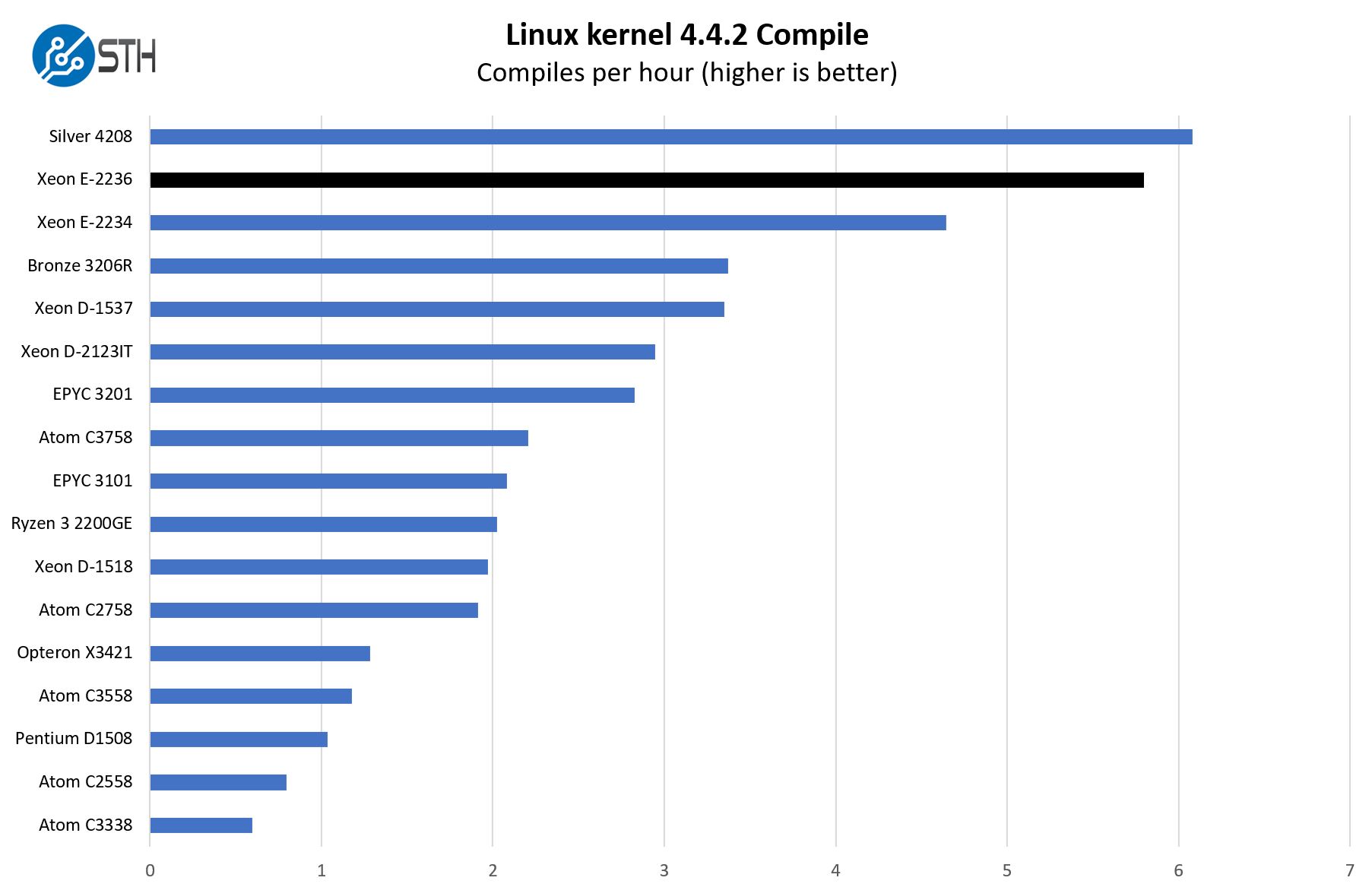
Just for some sense, the Intel Xeon E-2236 is nearly a competitor to the higher-end Intel Xeon Silver 4208 that is popular in lower-end virtualization servers.
7-zip Compression Performance
7-zip is a widely used compression/ decompression program that works cross-platform. We started using the program during our early days with Windows testing. It is now part of Linux-Bench.
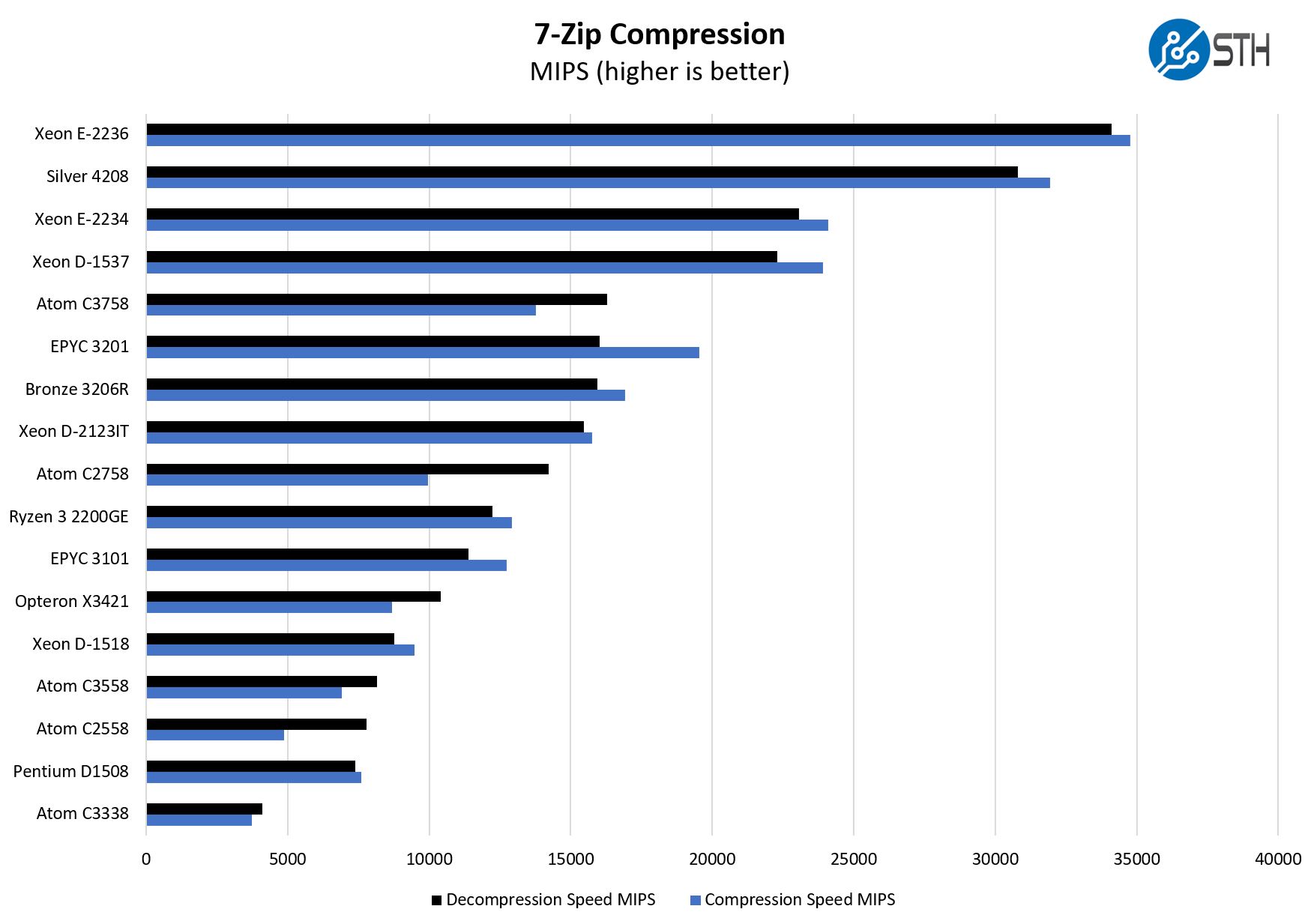
One will also quickly note that we have the Xeon E-2234 results here. We reviewed the Intel Xeon E-2234 previously and had the Xeon E-2236 results, so we are showing them normalized with our other normal benchmark results. Showing both of these means that we can see the performance of both CPU options for the GM-1001 and GM-1002 QNAP offerings. There is a fairly large CPU performance delta.
OpenSSL Performance
OpenSSL is widely used to secure communications between servers. This is an important protocol in many server stacks. We first look at our sign tests:
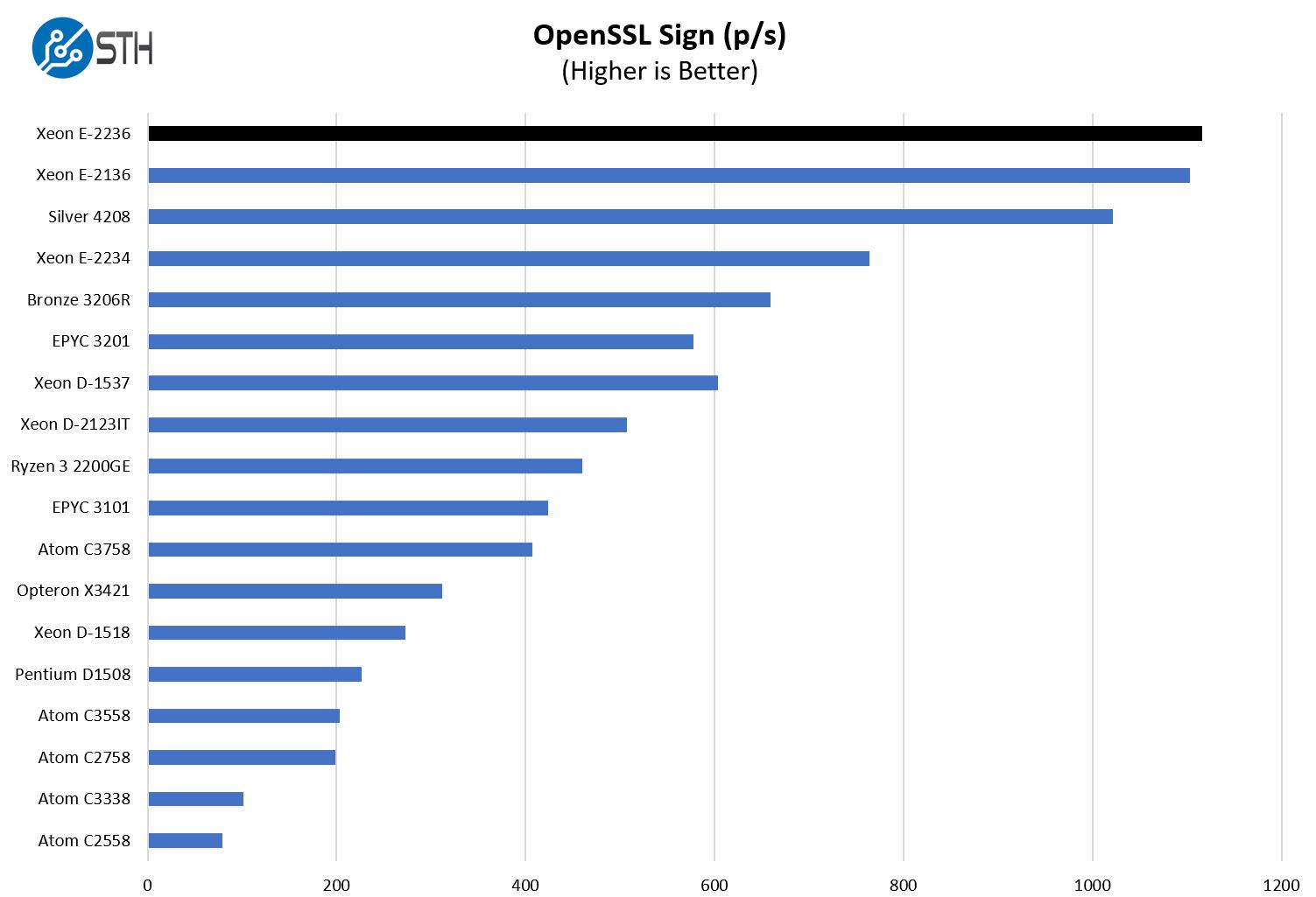
Here are the verify results:
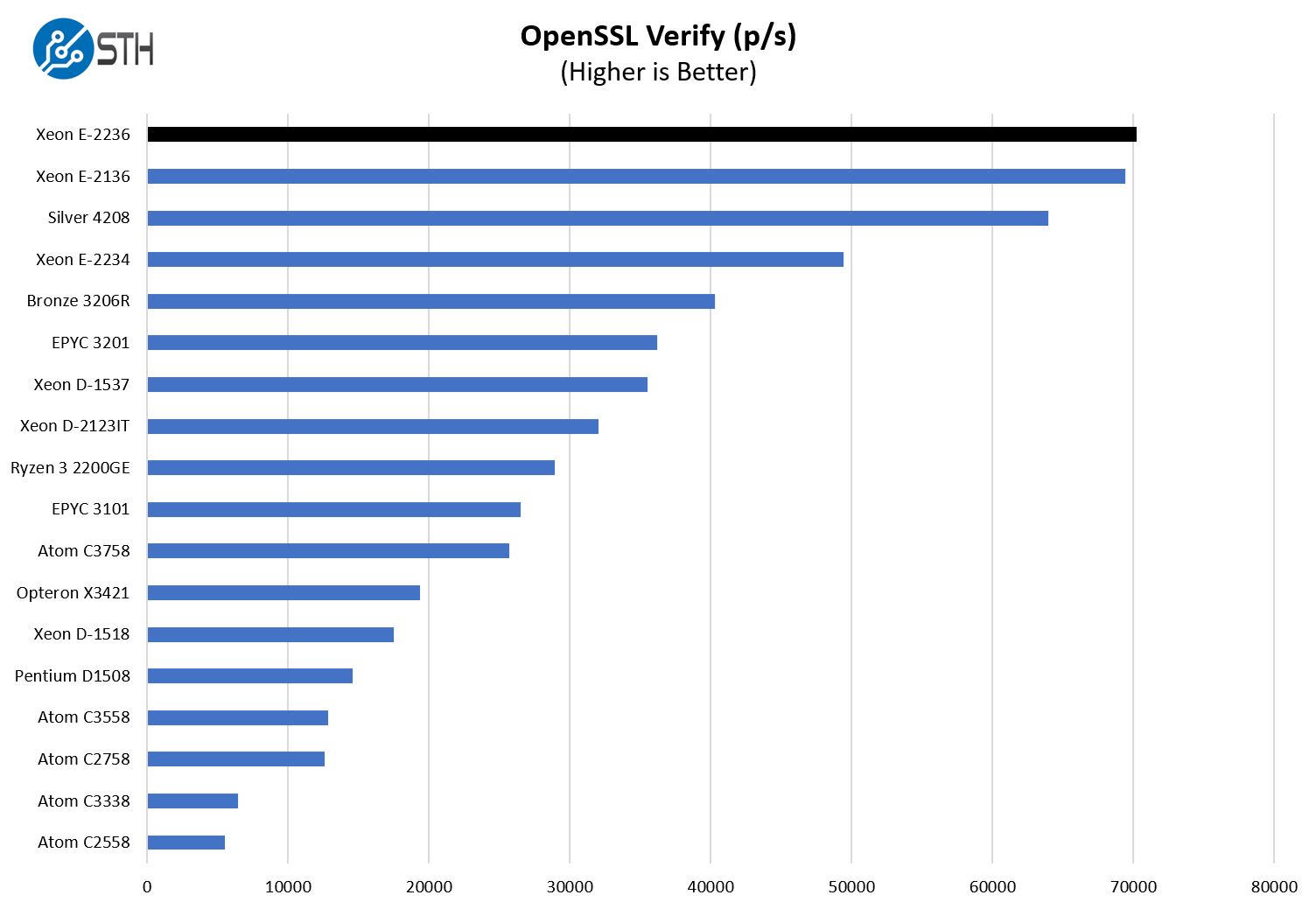
As a quick note, we are sorting here using the verify results which is our standard. The Xeon E-2236 performs extremely well here. When we look at the Atom and Xeon D offerings, those tend to be popular in NAS units. While they can run some applications, these results demonstrate just how much faster the more modern and higher-clock speed CPU found in the QNAP GM-1002 is.
Storage Performance
The storage performance of these systems is very dependent on the disk configuration including drives used, cache SSDs, compression/ deduplication, and even RAM/ other applications running on the NAS. We still wanted to show the impact of moving to SFP+ 10GbE as the performance over 2.5GbE was quite eye-catching.
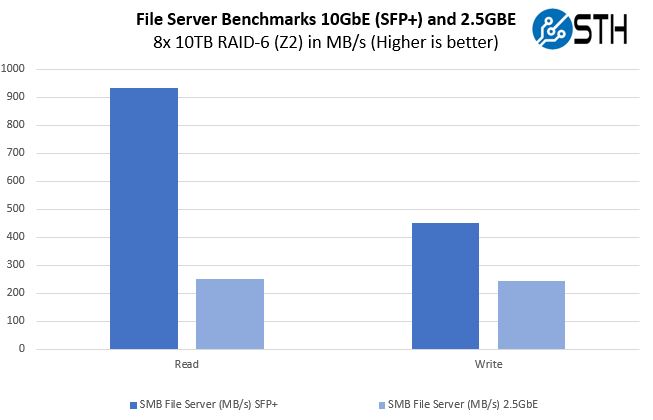
Here is another view looking at the file transfer speeds.
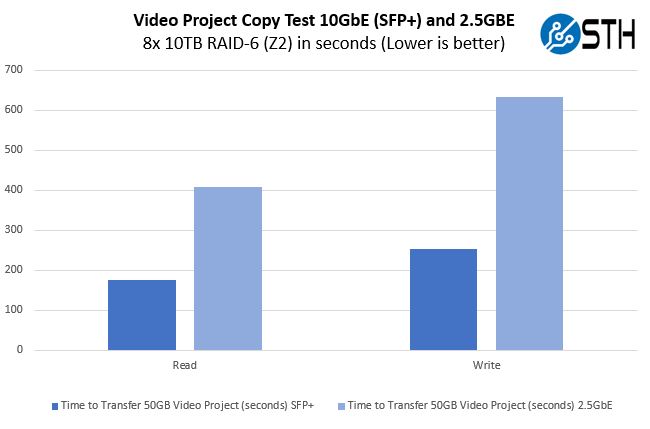
We are not going to chart this, but we did confirm the NICs were running at their rated speeds as well.
Power Consumption and Noise
The power consumption is dominated by disks and add-in cards. We debated whether we should test this in our 208V data center lab or in our 120V embedded edge data center lab. In the end, we are using 208V data center power and measuring by Schneider Electric/ APC per-port PDUs at 17.5C and 71% RH. Our testing window shown here had a +/- 0.3C and +/- 2% RH variance.
- Idle empty: 165W
- Idle half-full drives: 189W
- Idle full drives: 235W
- Average power consumption half-full: 301W
- Average power consumption full: 361W
- Max observed: 472W
It seems as though the 770W power supply configuration makes sense for this unit. What we can also note here is that this is going to vary a great deal based on the types of workloads but also how the systems are configured.
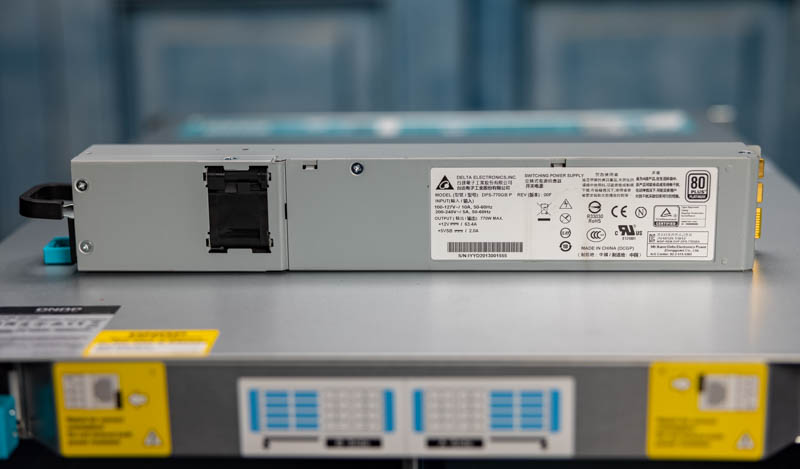
In terms of noise, we saw the following in a 25dba ambient environment as measured from 1m in front of the chassis:
- Idle: 59dba
- Moderate Disk Activity: 62dba
This is far too loud to have in an office environment. This system needs to be located either in a data/ equipment closet or in a data center.
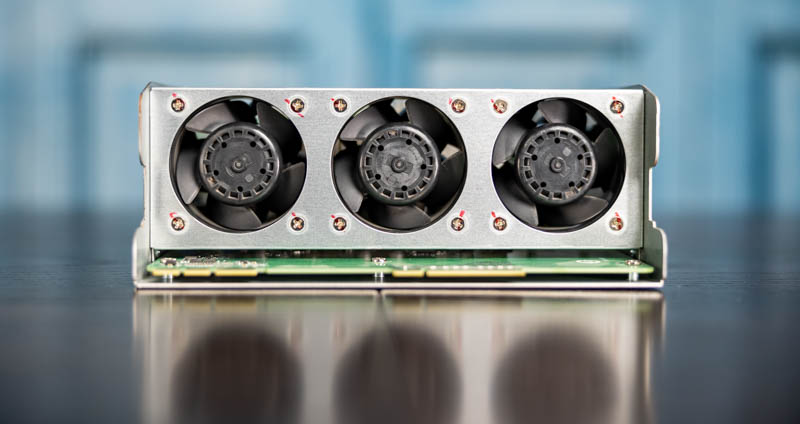
Next, we are going to discuss the market impact of this solution, along with our final words.




Thanks for the review.
IMHO Qnap has pretty good hardware, an ok price/perf ratio, and a quite useable GUI for even beginners.
BUT: There software quality control has become absolutely horrendous in the last years.
I still have administered QNAP NASes for some people in my family until i could convince them to invest into a DIY linux server i build and administer for them late last year.
There were serious vuernabilities so frequently like i have NEVER experienced in any IT product whatsoever.
Even when one reades the relevant IT news sites, there is no other company by far mentioned with urgent security issues.
Add to that bugs, fatal updates..
It was already bad years ago, and it got even worse. They push out new products and OS features and seem to have much too few or too few experienced personal dedicated to security and QA.
One just needs to look at the QNAP forums.
I would not trust them with any production setup. Not for a second. And the seeming ease of use of their web panel does not make up for the manhours and lost sleep that those regular – serious – security issues will take up over even 2-3 years.
I can not speak for the new ZFS based OS version, but it seem to not differ to much from the crappy quality of the non-ZFS version.
This is quite sad, because IMHO if they could get the quality right and security, they would be easily the best brand on the SOHO/Home user NAS market.
But as a potential customer mostly only discovers the security problems after buying the product, pumping out new SKUs to generate cashflow instead of investing in long term quality seems to be the (shortsighted) strategy of QNAP.
‘Although the PSUs are shared, we illuminated the A side node in Blue and the B side node in Green’ …just because you could. You don’t have to make up a reason to look cool :)
Fan’s 12V x 1.80A @ full speed.. 21.6Wx6pcs. Thats approx. 130w of power, i’m not surprised at 70% of speed they will eat close to 100W and dBA59 is disaster for office use.
Interesting, but there are two things that would make this really interesting and much more useful. Either:
A) Get us some dual ported SAS drives and let us run it active/active, or at minimum a failover at the backplane end (even if it ends with some downtime).
B) A cluster with a bunch of these using vSAN or S2D type storage (moreso than Gluster even) so that you can have full node redundancy. Two of these in 6U and it can survive a full node failure would be a good thing to have.
Otherwise, sure, cool, but besides saving 1U of rack space and a few nice features, it seems a very small benefit over two 2U NAS that cost less and can handle more drives. And forget NAS, this is at the price point where I could purchase two 2U servers with 8 LFF drive bays!